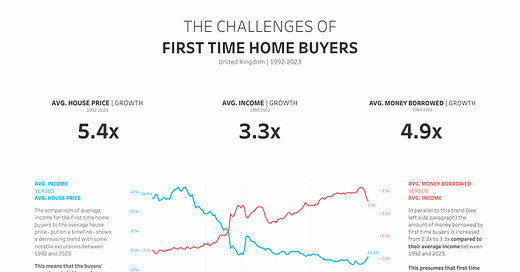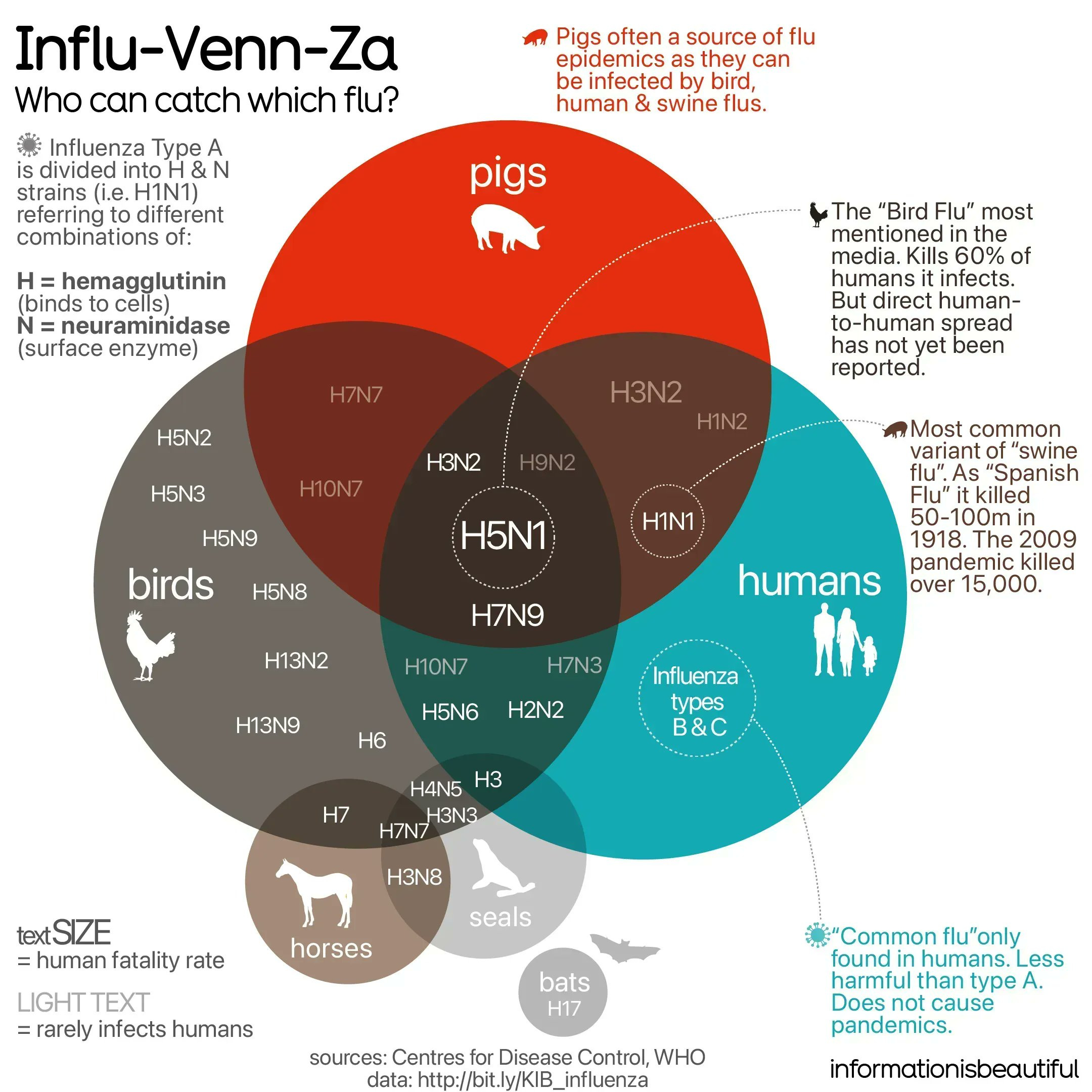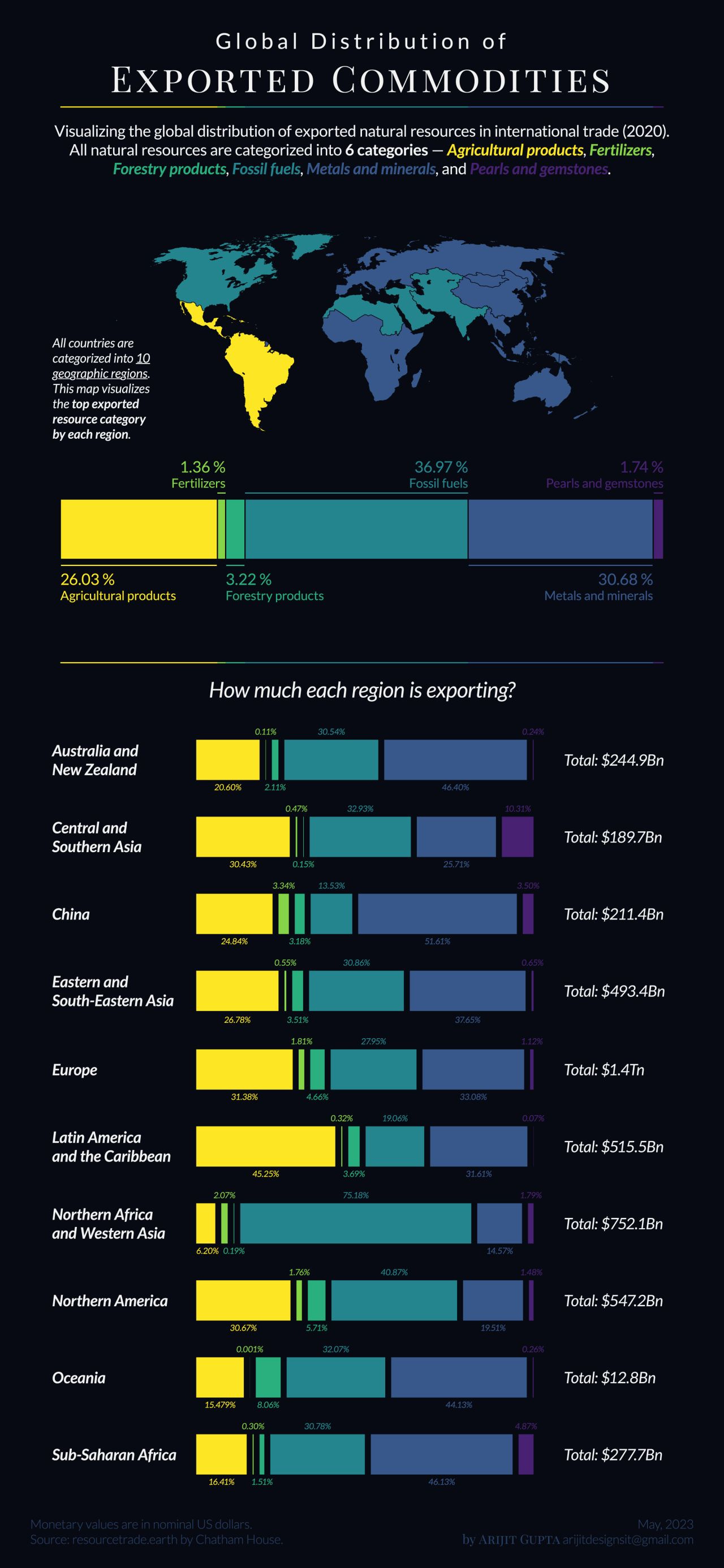Buying home in 2023 and more...
[Issue #5] One of the biggest talk of 2023 is the cost of living crisis. Our this week's issue looks into the challenges of first time home buyers in the UK... this and two more topics :)
Challenges of first time home buyers in the UK
Creator: Tamás Varga
Insights
The chart compares the average income of first time home buyers to the average house price - for example, in 1992, the average income was 38.4% of the house price.
Additionally, it also showcases the average money borrowed as a multiple of average income - for example, in 2023, a first time home buyer in the UK borrowed 3.3x their annual income.
The overlapped line chart indicates that in 2023, the average home buyer is borrowing 50% more than they would have in 1992. Also, with their own income they are able to get a lesser share of the house (down by ~40% of 1992 share value of 38.4%)
Influenza - Who can catch which flu?
Source: Information is Beautiful
Insights:
Influenza viruses commonly involve birds, particularly wild waterfowl, as their primary reservoir. Pigs are also important in influenza transmission due to their ability to host and facilitate genetic reassortment between human and avian influenza strains. In addition to birds and pigs, humans and various other mammals can become infected with influenza viruses, underscoring the virus's adaptability and potential for spillover into different species.
Influenza Type A is highly diverse and can infect various hosts, often leading to pandemics. In contrast, Type B primarily infects humans and causes seasonal outbreaks, while Type C typically causes mild respiratory infections and is less common, not contributing to seasonal epidemics.
H5N1 is a highly pathogenic strain of avian influenza, commonly known as bird flu, that can infect birds and occasionally humans. It is a significant concern due to its potential to cause severe illness and has raised fears of a global pandemic. It kills 60% of the humans it infects.
Global Distribution of Exported Commodities
Creator: Arijit Gupta
Insights
The visualization showcases the global distribution of exported commodities - Agricultural products, Fertilizers, Forestry products, Fossil fuels, Metals and minerals, and Pearls and gemstone.
While the distribution seems similar for different regions of the world, there are some regions stand out for few categories, for example -
Latin America and the Caribbean are highly dependent on the exports of agricultural products.
North Africa and Western Asia, with 75.18%, are heavily dependent on the exports of fossil fuels - including crude oil and coal.
In addition to being a biggest exporter of goods in the world, China also exported ~$110Bn worth of metals and minerals (in 2020).
… and that’s our Insight Scoop for this week!
If you found some value from this post, then please share it with your friends, family and network :)







